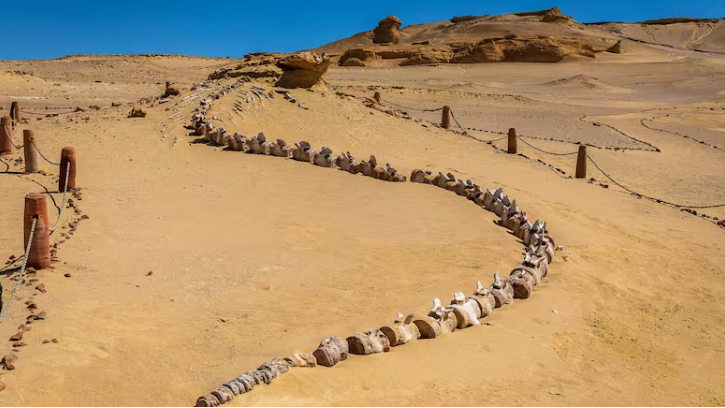Do You Know About the Mysterious Valley of the Whales in Egypt
#ValleyOfTheWhales, #WadiAlHitan, #EgyptFossils, #PrehistoricWhales, #WhaleEvolution, #Basilosaurus, #Dorudon, #UNESCOHeritage, #FossilSite, #PaleontologyMiracle, #Valley of the Whales
KNOWLEDGE & EDUCATION
8/1/20252 min read


The desert isn’t the first place you’d expect to find whales, but in Egypt, there’s a stunning exception. Deep in the Western Desert, lies Wadi Al-Hitan — “Valley of the Whales” — a UNESCO World Heritage Site that reveals a surprising secret: this arid land was once covered by an ancient sea, and home to prehistoric whales!
Let’s dive into the fascinating story of how this valley rewrote our understanding of evolution.
1. A Desert Full of Whale Fossils
Wadi Al-Hitan is located about 150 km southwest of Cairo, in Egypt’s Fayoum Oasis. It contains hundreds of fossilized skeletons of whales that lived 40 to 50 million years ago, during the Eocene epoch.
These aren’t just bones — they’re entire skeletons, preserved in near-perfect condition, offering a snapshot of life when whales were transitioning from land to sea creatures.
2. Why It’s So Special
The site includes fossils of Basilosaurus and Dorudon, two extinct whale species. What's mind-blowing is that some of these whales had legs — tiny hind limbs — showing that whales once walked on land before fully adapting to ocean life.
Wadi Al-Hitan provides some of the clearest evidence of whale evolution from land-dwelling mammals.
3. The Evolution Story Unfolds
The fossils found here show a critical stage in whale evolution:
Basilosaurus was over 15 meters long, with a snake-like body.
Both species had vestigial legs, pointing to their terrestrial ancestry.
The transition shows how marine mammals evolved over millions of years to lose limbs and become streamlined for life in water.
This was a groundbreaking discovery for evolutionary biology.
4. Discovery and Recognition
Discovered in the early 20th century, the fossils gained global attention in the 1980s. In 2005, Wadi Al-Hitan was declared a UNESCO World Heritage Site for its “invaluable contribution to understanding the evolution of whales and marine ecosystems.”
Today, it is preserved as a natural museum, with interpretive trails, skeleton exhibits, and eco-tourism activities.
5. Modern Tourism and Preservation
Visitors can walk through the desert and see real whale skeletons still embedded in the sand, along with displays in a sustainable museum made from local materials. The Egyptian government and UNESCO work to protect the site from erosion and human damage.
It’s a place where science meets wonder, and where desert sands hold ocean secrets.
Conclusion
Wadi Al-Hitan — the Valley of the Whales — is not just a tourist attraction; it’s a natural time capsule. From walking whales to modern marine mammals, it shows us how life evolves in the most unexpected ways. It reminds us that our planet’s history is full of surprises, often buried in the most unlikely places.
Knowledge
Empowering minds with reliable educational content daily.
Newsletter Signup
© 2025 DoYouKnow. All rights reserved.
Stay Ahead of the Trends – Join Our Newsletter
